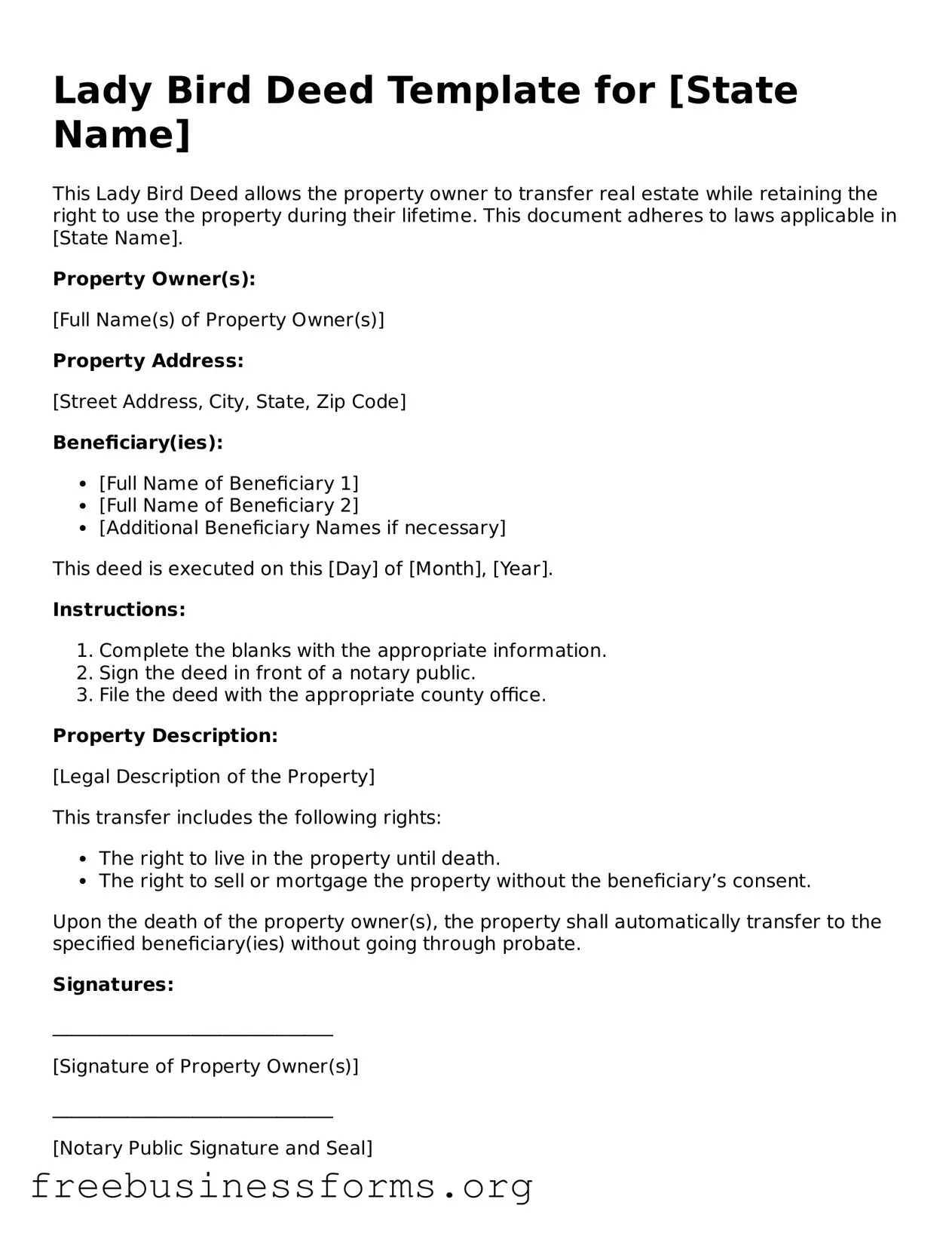Lady Bird Deed Template for [State Name]
This Lady Bird Deed allows the property owner to transfer real estate while retaining the right to use the property during their lifetime. This document adheres to laws applicable in [State Name].
Property Owner(s):
[Full Name(s) of Property Owner(s)]
Property Address:
[Street Address, City, State, Zip Code]
Beneficiary(ies):
- [Full Name of Beneficiary 1]
- [Full Name of Beneficiary 2]
- [Additional Beneficiary Names if necessary]
This deed is executed on this [Day] of [Month], [Year].
Instructions:
- Complete the blanks with the appropriate information.
- Sign the deed in front of a notary public.
- File the deed with the appropriate county office.
Property Description:
[Legal Description of the Property]
This transfer includes the following rights:
- The right to live in the property until death.
- The right to sell or mortgage the property without the beneficiary’s consent.
Upon the death of the property owner(s), the property shall automatically transfer to the specified beneficiary(ies) without going through probate.
Signatures:
______________________________
[Signature of Property Owner(s)]
______________________________
[Notary Public Signature and Seal]
